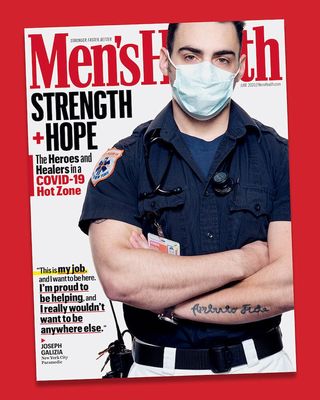
Dr. Aaron Horschig, DPT, of Squat University, has made it his mission to help lifters heal their aches and pains. From fixing knee pain while squatting to improving ankle mobility, he covers just about every issue that can pop up in the weight room. His most recent video is no exception: He’s breaking down how lifters can relieve their low back pain after tweaking it during exercise.
First things first: Stretching might not be the optimal way to go, even if it is your initial inclination.
“Most of the time when we have back pain as strength athletes, we want to get rid of it as quickly as possible,” he says. “I’m going to tell you today that the way you’re going about trying to take your pain away by stretching is not optimal, and you’re actually going about it the wrong way.”
He says that back pain is likely due to something deeper within your spine, but that you’re feeling the residual effects in your muscles.
“A lot of time you will be feeling that pain in your muscles because of the inflammatory process that comes with having that injury,” he says. “You’ll feel your muscles spasm up. It’s not actually a muscular strain. You didn’t strain your QL, you didn’t strain your erectors–they are just tight and painful because of the inflammatory process of the injury that is occurring deeper.”
While stretching may offer temporary relief, it’s not fixing the problem. And that’s what Dr. Horschig is here to do.
The Compression Test
“Sit on a stool or a box, and you’re gonna sit with a good upright chest position. You’re going to pull up as hard as you can. Try to compress your spine straight down,” says Dr. Horschig. “Did that create any pain or make it worse?”
He explains that pain is usually triggered by flexion in your spine as you do heavy deadlifts or squats. If you do have this, he offers three ways for you to relieve your lower back pain. (However, if you felt no pain during The Compression Test, he suggests taking this lower back pain screening test.)
The Cat Camel
To do this, get on all fours, and slowly draw your stomach towards your spine, creating a rounded back (cat). From there, slowly drop your stomach towards the floor (camel). This move takes your spine through a range of motion to help ease tension and and muscle guarding.
“What we’re doing is taking the spine through a range of motion, nice and light,” says Dr. Horschig. “If you have some of that muscle guarding because of the inflammation due to the injury deeper at the spine, this is going to help decrease some of that tension and guarding and help you feel better afterwards.”
The Hip Airplane
For this, you will get into a single-leg RDL position while holding on to something to maintain balance.
“From here, you’re going to twist open the hips [bracing your core and turning your torso open], then close the hips,” says Dr. Horschig. “When you open the hips, you’re going to feel a stretch deep inside your joint. And when you close the hips, you’ll feel a stretch in the outer part of the hip.”
This move will help with hip mobilization.
“Oftentimes back pain that we get int he weight room is related to problems at the hips. Even though you feel your injury at your spine, the problem often started because of something that is imbalanced at the hip,” says Dr. Horschig.
Do this for 10 reps, holding each move for five seconds, then switch legs.
Bending Forward
Dr. Horschig also wants you to think about moving differently outside of the gym to help you take stress off of your back. He offers this tip for anytime you bend forward, like picking something up, grabbing something from the fridge, or bending forward to spit out while brushing your teeth.
“Any time you are bending forward, I want you to put your hands on your thighs. What that’s going to do is increase a little core stability, moving about your hips, and from there you’re able to pick something off the ground with less strain on your low back,” says Dr. Horschig.
He also mentions that other exercises that might be helpful for you to do for lower back pain include glute bridges (to activate your hips) and the McGill Big 3 (to stabilize your spine).

Source: Read Full Article